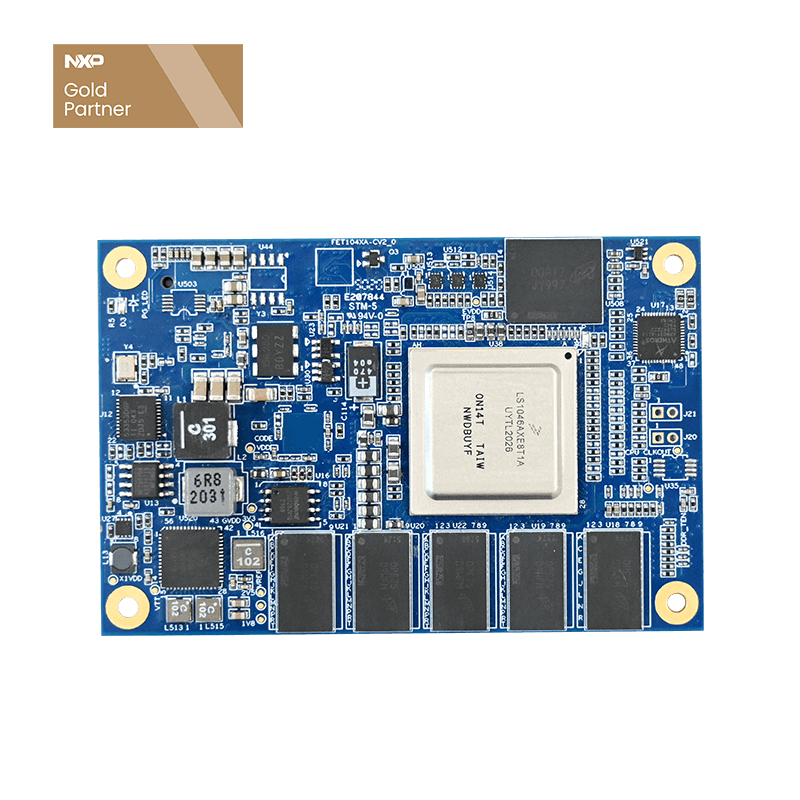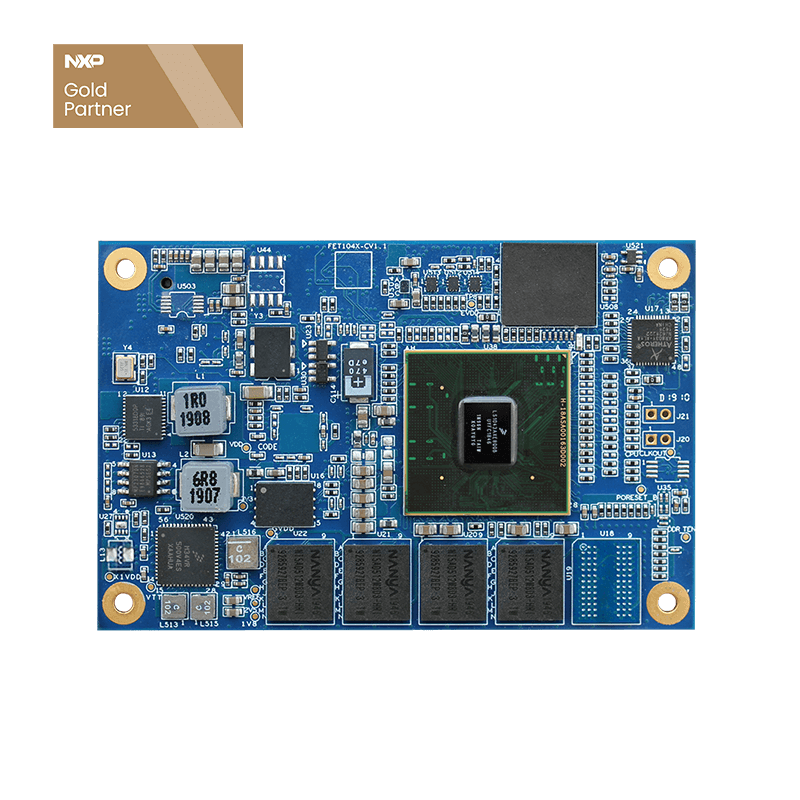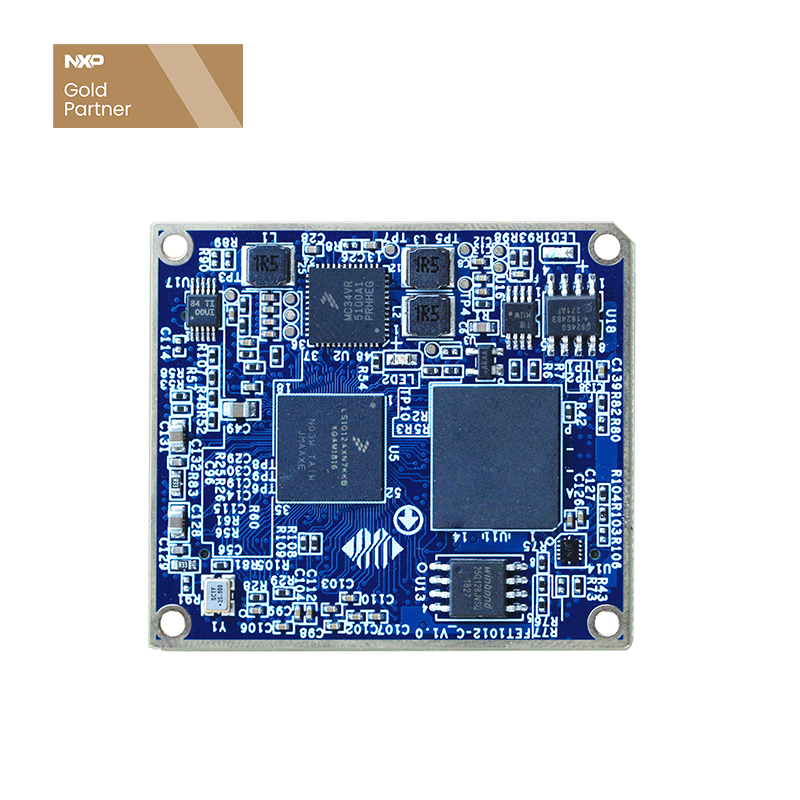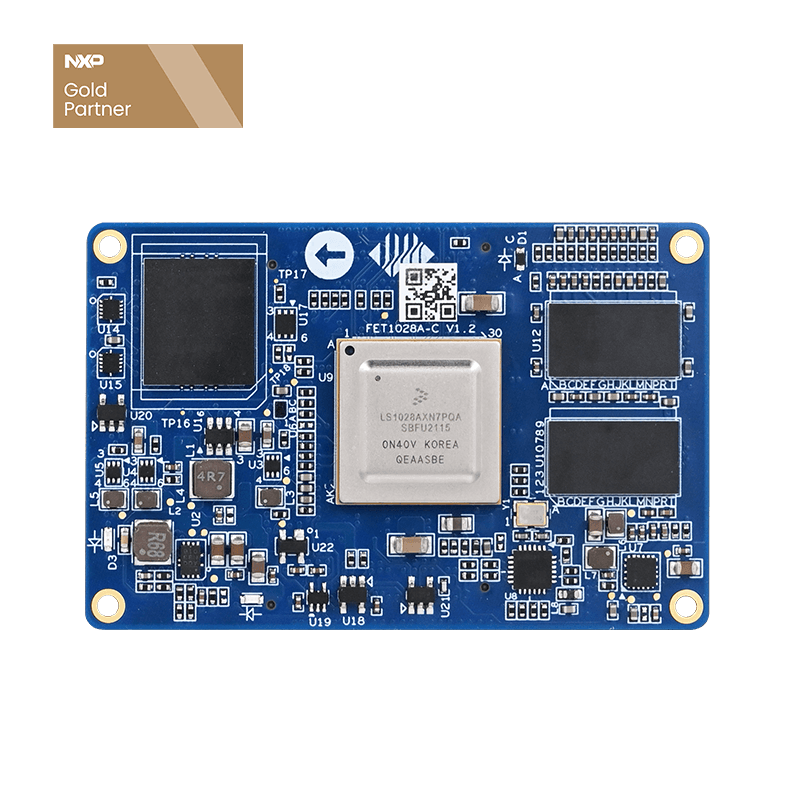
LS10xx Series SoM Performance Comparison
Driven by the background of 5G and the Industrial Internet, NXP's partners have also launched many SoMs based on Layerscape communication processors, such as FET1012A-C, FET1043A-C, FET1046A-C, FET1028A-C system on modules, these core boards all use Layerscape LS10xx communication processor, which has obvious advantages in network throughput performance, and the number of native network ports is relatively large, such as FET1046A-C can support up to 8 Gigabit network port.
However, in the face of this product combination with excellent depth and breadth, if you don’t know much about this series of platforms, it is inevitable that you will have some confusion when selecting models. Products have a clearer and more comprehensive understanding, understand their respective advantages, and can be more accurate when selecting models.
Feature comparison
| Features | FET1012A-C | FET1028A-C | FET1043A-C | FET1046A-C |
| Network ports | 2 | 6 | 7 | 8 |
| Speed | 2.5Gbps | 2.5Gbps | 10Gbps | 10Gbps |
| 10 Gigabit optical/electrical ports | - | - | 1 | 2 |
| TSN | not support | support | not support | not support |
| PCIe | 1xPCIe2.0 | 2xPCIe3.0 | 3xPCIe2.0 | 3xPCIe3.0 |
| SATA3.0 | 1 | 1 | 1 | 1 |
| USB3.0 | 1 | 2 | 3 | 3 |
| UART | 2 | 4 | 6 | 6 |
| IIC | 1 | 6 | 2 | 2 |
| eSDHC | 1 | 1 | - | - |
| SPI | - | 2 | - | - |
| CAN FD | - | 2 | - | - |
| IIS | 5 | 6 | - | - |
| Display Port | - | 4K | - | - |
- Note 1: There is a multiplexing relationship between functional pins. The data in the table is the maximum number of a peripheral controller in the CPU, which is actually determined according to the pin function configuration.
- Note 2: The 2.5Gbps network port is generally only configured as 1Gbps because the PHY chip is relatively rare.
In terms of functions, the FET1028A-C is the most special, and it is the only one of these products that supports display, SPI, and CAN-FD; and all the six native network ports of the CPU support the TSN network, which is more suitable for industrial Internet. Applications.
The network performance of FET1043A-C and FET1046A-C is more powerful, the number of network ports is large, and the built-in DPAA hardware network acceleration engine can also reduce CPU usage while accelerating network throughput; these two SoMs are Pin to Pin compatible design and can be used interchangeably to a certain extent.
Compared with these products, the price of FET1012A-C is much cheaper. In addition, it supports USB 3.0 (connected to 5G modules), has 2 Gigabit Ethernet ports, and is supplemented by a hardware network acceleration engine, which has met the basic functions of 5G gateways.
Network performance comparison
FET1012A-C Gigabit network iperf test
FET1028A-C Gigabit network iperf test
FET1043A-C Gigabit network iperf test
FET1043A-C 10 Gigabit network iperf test
Single core single port: 1.04Gbits/sec ↓↓↓
Multi-core and multi-port: 3Gbits/sec ↓↓↓
FET1046A-C Gigabit network iperf test
FET1046A-C 10 Gigabit network iperf test
Single core single port: 6.7Gbits/sec, 7.1Gbits/sec at best ↓↓↓
Multi-core multi-port: 8Gbits/sec, preferably 9.09 Gbits/sec ↓↓↓
| Features | FET1012A-C | FET1028A-C | FET1043A-C | FET1046A-C |
| 1Gbps | 930Mbps | 941Mbps | 941Mbps | 941Mbps |
| 10Gbps | - | - | 3Gbps | 8Gbps |
The gigabit network bandwidth of the four SoMs can reach a rate of 900Mbps+, compared with the measured rate of about 500Mbps for the gigabit network of the NXP iMX6 series i.MX 6Q (4-core A9@1HGz).
CPU performance comparison
| Features | FET1012A-C | FET1028A-C | FET1043A-C | FET1046A-C |
| Architecture | A53 | A72 | A53 | A72 |
| Core | 1 | 2 | 4 | 4 |
| Main frequency | 1Ghz | 1.5Ghz | 1.6Ghz | 1.8Ghz |
| RAM | 512MB DDR3 | 2GB DDR4 | 2GB DDR4 | 2GB DDR4 |
| ROM | 8GB | 8GB | 8GB | 8GB |
The following is a test comparison of the CoreMark and Dhrystone running points of each SoM ↓↓↓
| Features | FET1012A-C | FET1028A-C | FET1043A-C | FET1046A-C |
| CoreMark | 4111 | 16684 | 26352 | 45818 |
| Dhrystone | 2978 | 15804 | 19064 | 37935 |
The most well-known and common benchmarks in the embedded processor field are Dhrystone and CoreMark; CoreMark is a comprehensive benchmark that measures the performance of central processing units (CPUs) used in embedded systems. It was developed by eembc's shaygal-on in 2009 to become an industry standard, replacing the outdated dehry stone benchmark.
Dhrystone is a comprehensive benchmark program designed by ReinholdP.Weicker in 1984 to test CPU (integer) computing performance. Dhrystone does not include floating point operations, and its output is the number of times Dhrystone runs per second, that is, the number of iterations of the main loop per second.
Summary
By comparing the functions and performance of the four products, we must have a more comprehensive understanding of these products; in fact, when we choose a system on module, mainly considering these three factors.
The selection of embedded CPU does not mean that the higher the performance and the more functions, the better, but the selection of the appropriate platform according to the actual project requirements;
Finally, let's take an edge computing 5G industrial gateway as an example for a more intuitive comparison and selection - if these four products can be used, how should we choose?
When considering low power consumption, heat generation and cost, the FET1012A-C SoM can be selected
When considering the support of as many industrial buses and TSN as possible, the FET1028A-C system on module can be selected
When considering higher performance and more network ports, you can choose FET1043A-C and FET1046A-C SoMs





